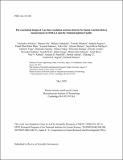| dc.contributor.author | Arikawa, Yasunobu | en_US |
| dc.contributor.author | Ota, Masato | en_US |
| dc.contributor.author | Nakajima, Makoto | en_US |
| dc.contributor.author | Shimizu, Tomoki | en_US |
| dc.contributor.author | Segawa, Sadashi | en_US |
| dc.contributor.author | Phan, Thanh Nhat Khoa | en_US |
| dc.contributor.author | Sakawa, Youichi | en_US |
| dc.contributor.author | Abe, Yuki | en_US |
| dc.contributor.author | Morace, Alessio | en_US |
| dc.contributor.author | Mirfayzi, Seyed Reza | en_US |
| dc.contributor.author | Yogo, Akifumi | en_US |
| dc.contributor.author | Fujioka, Shinsuke | en_US |
| dc.contributor.author | Nakai, Mitsuo | en_US |
| dc.contributor.author | Shiraga, Hiroyuki | en_US |
| dc.contributor.author | Azechi, Hiroshi | en_US |
| dc.contributor.author | Kodama, Ryosuke | en_US |
| dc.contributor.author | Kan, Koichi | en_US |
| dc.contributor.author | Frenje, Johan A. | en_US |
| dc.contributor.author | Gatu Johnson, Maria | en_US |
| dc.contributor.author | Bose, Arijit | en_US |
| dc.contributor.author | Kabadi, Neel V. | en_US |
| dc.contributor.author | Sutcliffe, Graeme D. | en_US |
| dc.contributor.author | Adrian, Patrick J. | en_US |
| dc.contributor.author | Li, Chi-Kang | en_US |
| dc.contributor.author | Séguin, Fredrick H. | en_US |
| dc.contributor.author | Petrasso, Richard D. | en_US |
| dc.date.accessioned | 2025-03-21T20:23:56Z | |
| dc.date.available | 2025-03-21T20:23:56Z | |
| dc.date.issued | 2020-05 | |
| dc.identifier | 19ja108 | |
| dc.identifier.uri | https://hdl.handle.net/1721.1/158747 | |
| dc.description | Submitted for publication in Review of Scientific Instruments | |
| dc.description.abstract | The nuclear burn history provides critical information about the dynamics of the hot-spot formation and high-density fuel-shell assembly of an Inertial Confinement Fusion (ICF) implosion, as well as information on the impact of alpha heating, and a multitude of implosion failure mechanisms. Having this information is critical for assessing the energy-confinement time τE and performance of an implosion. As the confinement time of an ICF implosion is a few tens of picoseconds, less than 10-ps time resolution is required for an accurate measurement of the nuclear burn history. In this study, we propose a novel 1-ps time-resolution detection scheme based on the Pockels effect. In particular, a conceptual design for the experiment on the National Ignition Facility and OMEGA are elaborated upon herein. A small organic Pockels crystal “DAST” is designed to be positioned ∼5 mm from the ICF implosion, which is scanned by a chirped pulse generated by a femtosecond laser transmitted through a polarization-maintained optical fiber. The originally linearly polarized laser is changed to an elliptically polarized laser by the Pockels crystal when exposed to neutrons, and the modulation of the polarization will be analyzed. Our study using 35-MeV electrons showed that the system impulse response is 0.6 ps. The response time is orders of magnitude shorter than current systems. Through measurements of the nuclear burn history with unprecedented time resolution, this system will help for a better understanding of the dynamics of the hot-spot formation, high-density fuel-shell assembly, and the physics of thermonuclear burn wave propagation. | |
| dc.publisher | AIP | en_US |
| dc.relation.isversionof | doi.org/10.1063/1.5143657 | |
| dc.source | Plasma Science and Fusion Center | en_US |
| dc.title | The conceptual design of 1-ps time resolution neutron detector for fusion reaction history measurement at OMEGA and the National Ignition Facility | en_US |
| dc.type | Article | en_US |
| dc.contributor.department | Massachusetts Institute of Technology. Plasma Science and Fusion Center | |
| dc.relation.journal | Review of Scientific Instruments | |
